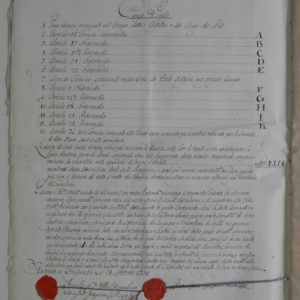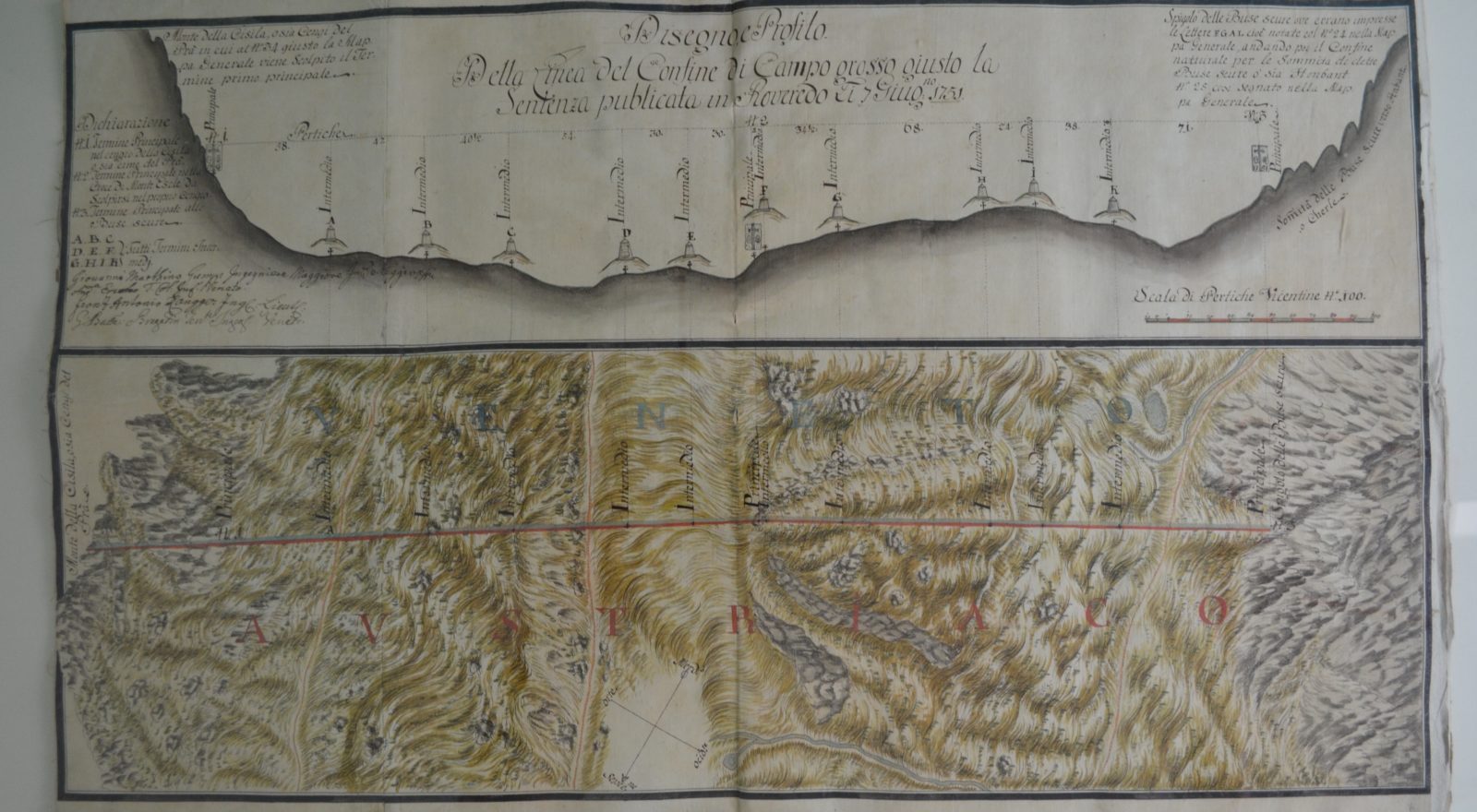GRENZAKTEN 2.0: an investigation into the deeds relating to the borders kept in Trento and Innsbruck
ISIG historian Katia Occhi recounts the articulated project dedicated to documents on borders created between 1400 and 1800
The project “Grenzakten 2.0” constitutes the evolution of a broader investigation project dedicated to the archives of the ecclesiastical principality of Trent, co-funded through four Archivi Calls from Fondazione Cassa di Risparmio di Trento e Rovereto, as of 2011, and in part by the Cultural Heritage Authority of the Autonomous Province of Trento and the University of Trento. Three volumes and four inventories have been produced online, which can be consulted on the Isig website and simultaneously on the portal of the Trentino Historical Archives Information System (AST) which today contains almost 800,000 archival projects.
The work in progress focuses on the so-called “Ältere Grenzakten” kept at the Tiroler Landesarchiv in Innsbruck, which is one of the project partners. The research completes the investigation dedicated to the “Border Deeds” kept in the Trento State Archives, on which Rossella Ioppi and I had previously worked. The collection contains copy documentation produced between 1400-1820 and was created in the mid-eighteenth century by the Gubernium of Innsbruck with various materials relating to the borders with Bavaria, Salzburg, the Graubünden, Trento and Venice, to be made available to the commissions for the borders, to which are added those produced by them during the border congresses. These initiatives were part of the measures promoted by the Habsburg monarchy in a broader reorganization operation that also concerned administrative, ecclesiastical, customs and monetary matters.

At the moment we are working on the so-called “Venediger Grenzakten“, which concern the border lines with the Republic of Venice. Both the Habsburgs and Venice at the time were interested in putting an end to the endless disputes between villages and border jurisdictions and defining the terms of their sovereignty with a precise line that followed the natural boundaries, ideal lines that proceeded along the ridges of the mountains or the course of the rivers. To this end, during the second half of the eighteenth century numerous agreements were concluded between the Republic and the Habsburg monarchy, following which border extraordinary commissioners were established (extending from Istria to Mantua). A precise definition of the boundary lines was pursued, based on ancient possession and uncontested customs. Over the course of a few years, bilateral treaties were concluded that meticulously regulated every possible dispute, pursuing a policy of neutrality set by the Venetian rulers already throughout the first half of the century. Through the Ältere Grenzakten it is possible to follow, in time and space, the construction and definition methods for the Austro-Venetian boundary line between the sixteenth and early nineteenth centuries.
The objective of the research project is to virtually reconstitute this section, which today is divided between Italy and Austria to make available to the scientific community a little-known collection, which until two years ago did not even have updated supplementary tools.
In closing, a final clarification on the historical value of these documents. They are in fact the only ones to have survived among those produced by the Austrian border commissioners. The originals were kept in the Vienna Palace of Justice and were destroyed in the fire that occurred during the riots of July 15, 1927, resulting in 90 deaths and 600 injured. Among the lost documents are also the diaries and logs of the Austrian commission, which operated in Rovereto in the mid-eighteenth century, as well as two wooden models, real orographic models made for the border dispute between Folgaria and Vicenza on the occasion of the Rovereto conventions of 1710 and 1751.
Today we know that the wooden copies destined for the Venetian commissioners had fortunately been saved and are located in the Venice State Archives, while an authentic copy of the Rovereto commission records is kept in the Trento State Archives, which makes our documentation even more valuable for the international scientific community.
Read more:
Images from the Trent State Archives, Atti dei confini, Serie I, b. 16, n. 12

